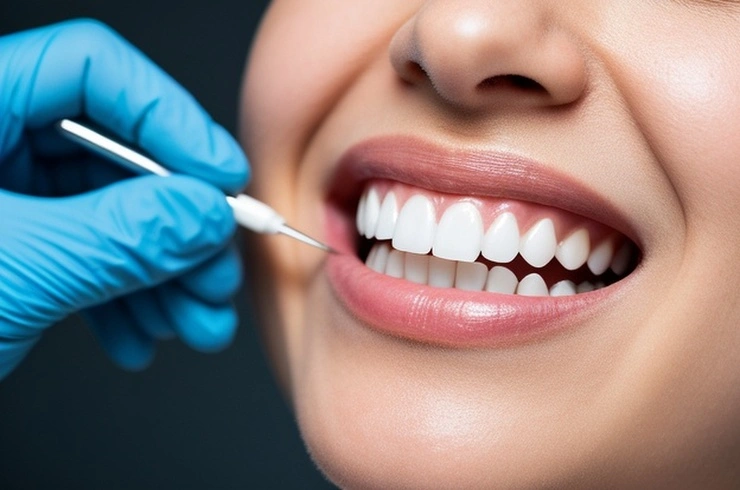
An even gum line is crucial for a symmetrical and attractive smile. When gums rest too high or too low on the teeth, they can make teeth appear either too short or excessively long. This article explores the causes of uneven gums, the process of gum contouring surgery, its benefits, and what to expect during recovery.
Understanding Uneven Gums: Causes and Concerns
Gums that sit too low, covering a large portion of the teeth, can result in a "gummy" smile, making teeth look disproportionately small. This can be influenced by genetics, certain health conditions, or even side effects from prescription medications. Conversely, gums that appear too high, making teeth look elongated, are often a sign of gum recession. Gum recession occurs when gum tissue pulls away from the tooth, exposing the root. Beyond cosmetic concerns, this condition can lead to serious dental issues such as tooth decay and potential tooth loss. It can also indicate underlying periodontal disease, which affects the supporting structures of the teeth, including gums and bone.
Is Gum Contouring Medically Necessary?
For the most part, gum contouring is considered a cosmetic procedure undertaken to enhance smile aesthetics. However, there are instances where it is a vital component of other essential periodontal treatments. These include crown lengthening, which prepares a tooth for a crown by exposing more of its structure; pocket reduction procedures, aimed at reducing the spaces between teeth and gums where bacteria can accumulate; and regenerative procedures, which work to restore lost bone and tissue. Additionally, adding gum tissue to address recession or trimming overgrown tissue that obstructs a tooth's crown are non-cosmetic applications of gum contouring.
Who Performs Gum Contouring and What's the Cost?
Both general dentists and periodontists, who specialize in gum health, are qualified to perform gum contouring. When choosing a practitioner, it's essential to inquire about their experience and expertise in the procedure. The cost of gum contouring varies significantly based on the extent of work required. It's advisable to discuss the anticipated costs with your dentist, as dental insurance typically does not cover gum contouring when performed purely for cosmetic reasons.
The Gum Contouring Procedure: What to Expect
Gum contouring is performed in a dental office setting. Modern techniques utilize scalpels, lasers, or radiosurgery for precise reshaping. Your dentist will determine the most suitable method for your specific needs. Before the procedure, your dentist will explain the steps involved, often using a pen to mark the proposed new gum line on your teeth so you can visualize the outcome. A local anesthetic will be administered to numb the treatment area, ensuring your comfort. In some cases, to achieve the best long-term results, a small amount of bone at the front of the tooth's root may also need to be reshaped.
Recovery and Aftercare
Following gum contouring, it's important to rest and limit physical activity for the remainder of the day. Complete healing of the gums typically takes a few days to several weeks. Your dentist will provide detailed post-operative instructions. General recovery tips include:
Pain Management: Use over-the-counter pain relievers like Tylenol or Advil as directed. Avoid aspirin, which can increase the risk of bleeding.
Dietary Adjustments: For the first few days, stick to soft, cool foods such as eggs, pasta, yogurt, cottage cheese, soft vegetables, and ice cream. Avoid spicy foods and anything with seeds until your gums are fully healed.
Oral Hygiene: Follow your dentist's guidance on when and how to resume brushing during the healing period.
Monitoring: Contact your dentist immediately if you experience excessive swelling, bleeding, or have any concerns.
Potential Risks
As with any surgical procedure, gum contouring carries some minimal risks, though they are rare. These include an allergic reaction to the anesthetic and the possibility of gum tissue relapse.
If you're considering gum contouring to enhance your smile, consult with your dentist to determine if it's the right option for you. Given the cosmetic nature of the procedure, it's crucial to select a skilled and experienced professional. Don't hesitate to ask about their additional training in cosmetic dentistry and request to see before-and-after photos of their previous work to ensure their aesthetic aligns with your expectations.
Pro Tip
The content of the article is shared by netizens, please carefully identify it